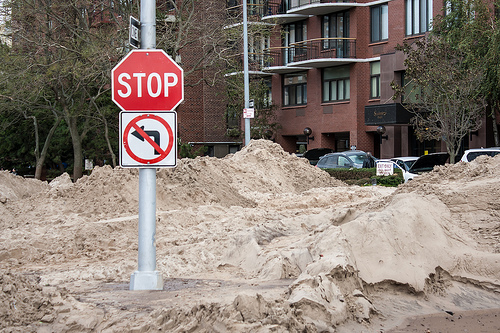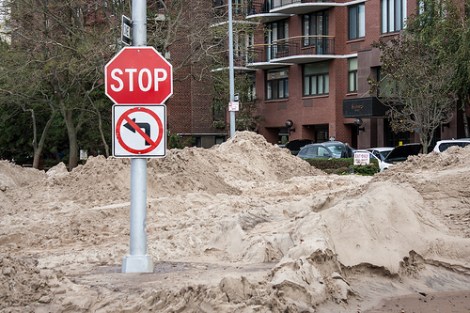According to House Speaker John Boehner’s master plan, the House will next week consider the other $51 billion in Sandy relief funding that it punted on earlier this month.
House Republicans will absolutely not approve all of it. The question is how much they’ll sign off on. With a coda for pessimists: if any.
Advertising distribution mechanism Politico.com outlines how the vote is expected to go.
First, the House plans to call up a bill by Appropriations Chairman Hal Rogers (R-Ky.) that totals $27 billion in relief. Then, it will immediately amend the bill to deduct the $9.7 billion in flood relief passed before Congress recessed — bringing the bill’s total to $17 billion.
Amendments will be allowed — including spending reduction amendments — and then the House will vote on passage of the Rogers amendment. This would set up $17 billion to be sent to the Senate.
But then leadership will allow Rep. Rodney Frelinghuysen (R-N.J.) to offer an amendment that offers an additional $33 billion. Republicans think this can pass as well.
But efforts by Rep. Mick Mulvaney (R-S.C.), who abstained from voting for John Boehner for speaker, could change the equation.
The South Carolinian has already offered multiple amendments seeking spending offsets, which if made in order could seriously complicate the pledge of Majority Leader Eric Cantor to move the legislation quickly.
Smart precedent by a representative of a state whose most tourist-friendly city lies right on the Atlantic Ocean.
House Republicans are particularly concerned about measures in the package that don’t go directly to providing aid to the affected and displaced. Among those measures are ones meant to ameliorate future storms: to improve prediction ability, to bolster federal facilities, to encourage smarter reconstruction in affected areas. Given that Republican members of the House are far more interested in symbolic penny-pinching (particularly when it can screw over East Coast libruls), much of that will likely end up on the House floor. So to speak.
It’s been noted with some regularity that an aid package of $60 billion was authorized by Congress 10 days after Hurricane Katrina. Superstorm Sandy was 75 days ago. Meaning that private relief services have dried to a trickle while public ones are increasingly strained. For example, housing aid, as reported by the Huffington Post:
Nearly 1,000 Long Island households displaced by superstorm Sandy are waiting to find out whether their federal funding for hotel rooms will be extended beyond Sunday.
That’s the current “checkout date” for the Federal Emergency Management Agency’s transitional sheltering assistance program, a spokesman for the agency said. However, the spokesman, John Mills, said Thursday that a decision about whether to extend the program could be made by the end of the day Friday.
Roughly 970 Long Island households — individuals or entire families — are staying in hotel rooms funded by the program, Mills said. Statewide, the program currently funds hotel rooms for about 2,360 households, he said.
There are two bright spots in this story. The first is that the “checkout” date has already been extended twice. The second is that FEMA is the only federal agency to have received aid from the Sandy bill the House passed last week — but just enough to keep it solvent.
Nonetheless, the checkout-date dilemma highlights the larger problem. The Sandy hourglass is down to its last few grains. More and more of the families that have spent nearly 11 weeks patching their lives back together will be unable to do so without help. Support is needed. Has been needed. And with each day that passes, we are 24 hours closer to another hurricane season for which the East Coast is only more vulnerable than before.
Update: FEMA extended the residency deadline until January 26.





